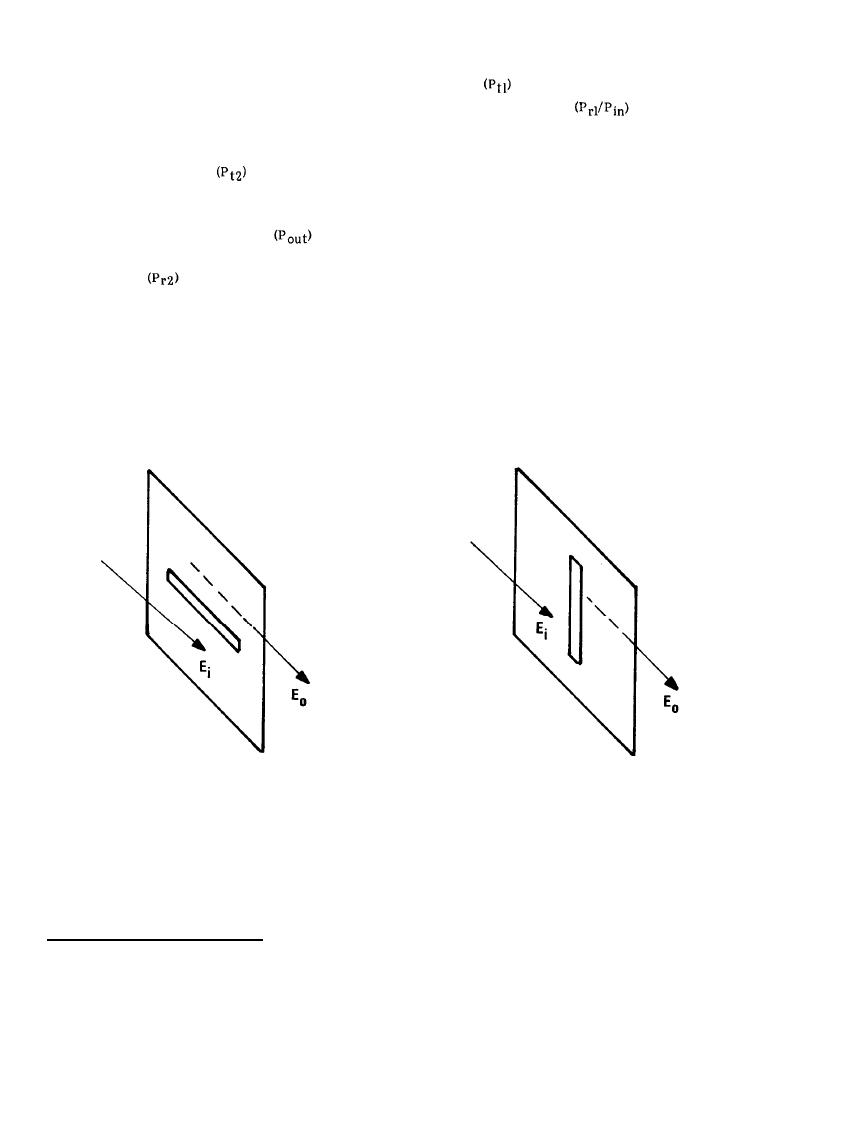

Custom Search
|
|

|
||
 MIL-HDBK-419A
incident power is reflected back toward the source; the remainder
penetrates the shield and begins to
propagate through the shield. The ratio of reflected power to incident power
depends upon the
intrinsic impedance of the shield material and the wave impedance* of the incident wave in the same manner as
at the junction of two transmission lines of different characteristic impedances. A portion of the power
transmitted into the shield
is converted into heat as the wave moves through the shield; this energy loss is
referred to as absorption loss and is analogous to the dissipated energy within a lossy transmission line. Of the
power which propagates through the shield to reach the second surface of the shield, a portion is reflected back
into the shield and the remainder
is transmitted through the surface and beyond the shield. If the
absorption loss within the shield is small (less than 10 dB), a significant part of the power reflected at the
second surface
propagates back to the first surface where a portion is reflected back into the shield,
propagates back to-and-through the second surface, and contributes to the power propagated beyond the shield.
Shielding effectiveness, then, depends upon three factors: (1) reflection loss, (2) absorption loss, and (3) a
re-reflection factor which is significant when the absorption is small.
(A)
(B)
Figure 8-1. Electromagnetic Transmission Through a Slot
*Wave impedance is defined as the ratio of the electric field strength to the magnetic field strength in the
plane of interest. For further information, see Chapter 18 of Everett (8-2).
8-3
|
 
|
|
 |
||